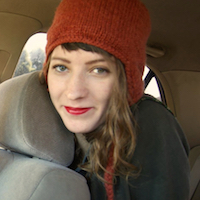More about Wolfgang Laib
Works by Wolfgang Laib

Contributor
Wolfgang Laib figured out that, for some reason, people will pay good money for a mason jar filled with pollen.
Before Wolfgang Laib was a conceptual artist, he was a German academic. His absolutely thrilling dissertation on the hygiene of drinking water provided him with little satisfaction, so Laib left the medical profession and turned to art and Eastern philosophy.
Laib currently uses principles of Zen Buddhism and Taoism to ground his creative process. His chosen materials almost make it seem like he’s whipping up a gourmet snack-- milk, pollen, beeswax, rice. Take that to New York and you’ve got yourself the premise for an exclusive (and expensive) dining experience. Laib also uses marble, which is of course considerably less edible, but just as pricey.
According to Laib, his creative process is a spiritual experience that tends to focus on contemplation and repetition. Considering that for the last THREE DECADES Laib has painstakingly gathered mass amounts of hazelnut, dandelion, and pine pollen from the fields around his home, we’d say that he’s pretty damn good at repetition. But according to Laib, neither the process of collecting the pollen or the way in which it is presented is the artwork-- the pollen itself is the art. On that note, I’d like to mention that collectors flock to Laib to buy jars full of his pollen/art. Let me repeat: people pay hefty chunks of dough for a jar of plant sperm. All in the name of art, I suppose.
Laib is also known for creating cavernous chambers, built using only massive quantities of beeswax and also for his sanded marble slabs filled with milk. The use of these two materials definitely evokes the Bible’s fave image of a “land flowing with milk and honey.” We dig the aesthetic. Very holistic and trendy.
Featured Content
Here is what Wikipedia says about Wolfgang Laib
Wolfgang Laib (born 25 March 1950 in Metzingen, Germany) is a German artist, predominantly known as a sculptor. He lives and works in a small village in southern Germany, maintaining studios in New York and South India.
His work has been exhibited worldwide in many of the most important galleries and museums. He represented Germany in the 1982, Venice Biennale and was included with his works in the Documenta 7 in 1982, and then in the Documenta 8 in 1987. In 2015, he received the Praemium Imperiale for sculpture in Tokyo, Japan.
He became world-renowned for his "Milkstones", a pure geometry of white marble made complete with milk, as well as his vibrant installations of pollen. In 2013 The Museum of Modern Art in New York City presented his largest pollen piece – 7 m × 8 m – in the central atrium of the museum.
Check out the full Wikipedia article about Wolfgang Laib












